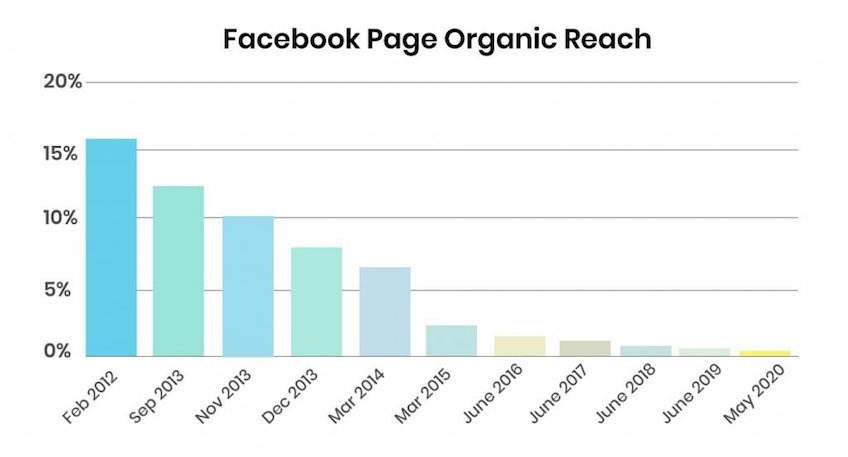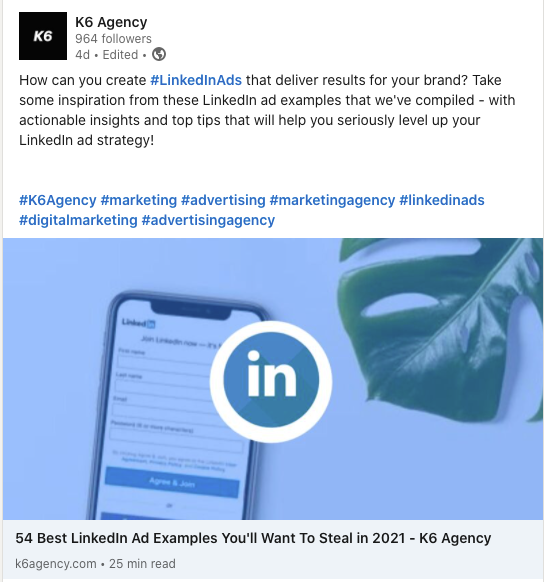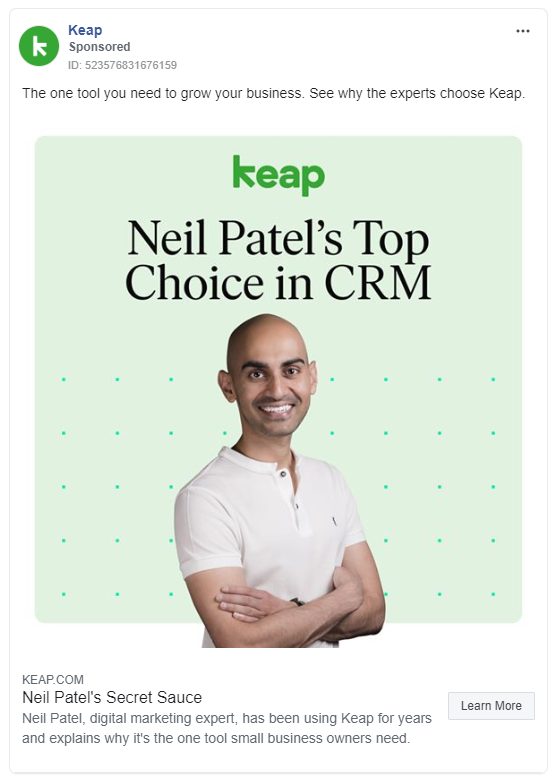If you’ve been active on Facebook for a couple of years, you’ve probably seen a huge drop in Facebook reach and performance.
It’s fair to say that everyone wants their posts to reach as many people as possible, even though it has become a big challenge for most.
The only way to do this is to understand what affects your Facebook reach and to set up good practices. Luckily, you’re in the right place. We have all the info you need to identify how you can achieve better performance on your Facebook posts. We understand… Sometimes it can feel like you’re all alone out there!

But we’ve got you covered. In this article, we’ll strive to:
- Tell you what Facebook reach is
- Explain what affects your Facebook reach
- Detail how you can track and measure Facebook reach
- Give you a plan of action to increase your Facebook reach
What is Facebook reach exactly?
Reach is the number of people who saw any content from your Facebook page.
Impressions represent the number of times any content from your Facebook page appeared on someone’s feed.
Page views are the number of times a Facebook page has been viewed by people, regardless of whether they’re logged in or not.
Facebook is known to constantly roll out new features to improve the experience for its users.
After all, they make most of their money from advertising, so anything that keeps people on their app and encourages businesses to spend more is good for them.
Of course, there’s a reason why their stock price has continuously improved since the organic reach of business pages diminished.

A few years back, they started rolling out features that literally destroyed the reach of Facebook pages. It is said that most pages reach around 6% of their total fans (even less on some occasions).

Facebook reach is the number of unique individuals who saw your posts on Facebook. It’s a metric that affects your engagement, likes, clicks, and so on. Why? If people don’t see your posts, they can’t interact with them.
It’s different from impressions, which count the number of times your posts were seen, including multiple views by the same person. Facebook reach only counts unique views.
What are the types of Facebook reach?
- Post reach
- Page reach
- Organic reach
- Viral reach
- Paid reach
Post reach and page reach are probably the most important reach metrics out there. Your post reach is the number of people who saw a particular post from your page in their news feed, and your page reach is the number of people who saw any posts from your page during a specific period of time (daily, weekly, or monthly).

These two metrics can sometimes be intertwined. In some cases, you’ll have a post with a lot of reach, but a low reach on your overall page. You might, on the contrary, have tons of posts with bad reach, but together they give you a big page reach.
The big question remains, which one should you focus on? To answer this, you should think of this question like the following: do you want to reach as many unique people as possible or just reach the same individuals more regularly? By answering this question, you’ll be able to choose the most important metric for your company.
Inside your Facebook page’s reach and post reach, there are two categories of Facebook reach:
Organic reach
Paid reach
Organic reach is the reach given by Facebook for free. It’s when your fans see your posts in their news feeds. They can see your posts in their news feed, but also by going to your page and looking for your latest posts.
One can use AI humanizer or Humanize AI Text tools to refine content further, making it more engaging and human-like while preserving its authenticity. This ensures that your organic reach remains strong without compromising quality.
Inside organic reach, there are two types of reach:
- Viral reach
- Non viral reach
Viral reach refers to people who see your posts because somebody else shared them. For instance, one of your fans shares your post, and 10 of their friends see the post in question, even though they aren’t fans of your page.
The same happens when you launch a Facebook ad to reach a larger audience. You might get someone who is not your fan to share your post, and their friends will see it as well.
Non-viral reach represents the people who saw your posts directly from the posts you’ve made. These are generally people who are already following your page and see your post either in their news feed or by going directly to your Facebook page.

Finally, paid reach is essentially the reach of individual posts that you paid Facebook to promote. Since you pay to promote them, you can have access to a lot of data and reports, such as demographics data, engagement rates, etc. With paid reach, you should get unlimited reach (unless you’ve reached 1.6B people).
One thing that seems a tad more complicated is the timeframe around the reach (1-day, 7-day, and 28-day).
For example, a user can see your content once today and once tomorrow, but with a 1-day increment, you’ll have two unique reaches instead of the accurate one. This is why we always recommend choosing a 7-day or 28-day window to track Facebook reach.
Reach vs. Impressions: What’s the Difference?
Although often used interchangeably, reach and impressions provide different insights into your content’s performance on Facebook:
- Reach: This metric refers to the number of unique users who have seen your post. It helps you understand how many distinct people your content is reaching, which is particularly valuable for assessing audience breadth and targeting effectiveness. High reach indicates your content is being distributed widely across unique individuals.
- Impressions: Impressions count the total number of times your content is displayed, even if it’s seen multiple times by the same person. For example, if one user views your ad three times, it contributes three impressions but only one reach. This metric is useful for evaluating how frequently your content appears in front of users, often tied to ad frequency and campaign visibility.
Key Takeaway: Reach focuses on the unique number of people exposed to your content, while impressions measure the total volume of views, including repeat exposures. Together, these metrics provide a comprehensive view of how well your content is capturing attention and how often it’s being presented to your audience. Balancing high reach with strategic impression management can maximize both visibility and engagement.
What are the reach factors?
- Previous interaction with person or page: How often a user has interacted with the person or page before.
- Type of post interacted with: Whether the post was a photo, video, text, or link, as certain types tend to receive more engagement.
- Initial interaction pool: The first group of people who see and interact with the post, which influences how widely it’s distributed.
- High positivity score: The amount of positive feedback (likes, shares, comments) a post receives, indicating its popularity.
- Time decay attributes: How recently the post was published, as older posts naturally lose visibility over time.
Why does Facebook only allow certain content to reach people’s newsfeed? Why doesn’t Facebook just show, in chronological order, the latest posts from the people and pages you follow?
There are two reasons:
- Facebook makes almost all their money from paid advertising.
- The better and more high-quality their news feed is, the more people will stay.
The more people go and stay in the news feed, the more money Facebook makes. In other words, the better the user experience, the more ad space Facebook can sell.
The goal is to show just the right amount of new, relevant, and personalized content in the user’s news feed. With new ads and posts appearing every day, Facebook is forced to filter for quality.
When you browse your Facebook feed, you might look at 30 posts, and if you don’t like them, you probably won’t come back. That’s why it’s crucial to create the best experience for the user.
In 2010, your Facebook reach was quite simple. It depended on three factors, collectively known as “Edgerank”:
- Affinity Score: The relationship between the user and the person or page posting. If you’ve interacted with them before, their posts are more likely to appear in your feed.
- Edge Weight: The type of content (photo, video, text, etc.). Certain types of posts are given more weight based on how much engagement they typically generate.
- Time Decay: The age of the post. The older the post, the less likely it is to appear in your feed unless it’s getting a lot of engagement.
If you scored the highest in these factors, your posts would show up first. Those who understood the factors were constantly winning space in the news feed.
Others, who didn’t understand them, were spending a lot of energy without gaining much traction. This applied equally to both Facebook pages and personal profiles.
Today, there are more than 100 factors that Facebook considers to show your post to your audience. No one wants a gigantic checklist before making a single Facebook post, of course!
Edgerank still matters, but additional factors have been introduced over the years.
Factor #1 – If you interacted with person or page
For instance, if you consistently like, comment on, or click every link whenever you post on your page, it’s safe to say that these users have a strong affinity for your content. Based on this behavior, Facebook’s algorithm assumes you want to see more posts from those individuals or pages, prioritizing their content in your feed.
Conversely, if you haven’t interacted with certain people or Facebook pages in a while, you’ll likely start seeing them less frequently. However, there are times when you may wish to see posts from them without engaging directly. This limitation highlights a fundamental flaw in Facebook’s algorithm; it can overlook the nuances of user preferences.
Additionally, consider that Facebook’s algorithms are continually evolving, attempting to strike a balance between user engagement and content relevance. As a result, it can sometimes lead to frustrating experiences where you miss out on posts that genuinely interest you. To combat this, actively engaging with a diverse range of content can help diversify your feed and ensure you don’t miss out on valuable updates.
Ultimately, while the algorithm aims to enhance user experience by tailoring content to individual preferences, it’s not perfect. Staying engaged and actively seeking out content that matters to you can help bridge that gap.
Factor #2 – The type of posts you interact with
This point is pretty straightforward: you might interact more with videos than with images. As a result, Facebook will prioritize video content over image content from the people and pages you follow.
For instance, Facebook videos were already taking up almost 82% of the Facebook feed in 2018—imagine how much more prevalent they are today in 2024.

That’s why we recommend all our clients use videos. Most people engage more with this type of content, and as a bonus, Facebook often charges less to reach those audiences.
Factor #3 – Initial interaction pool
When you make a post on your Facebook page, Facebook initially shows it to a small group of people, typically ranging from 25 to 100. This initial audience will determine the fate of your Facebook reach.
If they interact with your post, you will receive a higher score in Facebook’s algorithm, allowing you to reach more people over time. This is why it’s crucial to post content that sparks conversations. If you even ask your most engaged followers to like your post once it’s live, you significantly increase your chances of reaching a broader audience.
Factor #4 – Keeping a high positivity score
While the quality score no longer exists, the perception people have of your posts still matters. Users can choose to hide your posts from their Facebook newsfeed, which can significantly impact your reach.
For instance, if you post something provocative and receive a lot of comments like “I don’t want to see this,” it will negatively affect your Facebook reach.
On the flip side, positive feedback will lead to a higher score, allowing you to reach more people. Positive feedback can come from actions such as people sharing your post, spending time watching your video, or even saving your post for later.

Factor #5 – Time decay
As time goes on, the score of your post decreases. Essentially, the longer a post remains on your feed, the lower its score becomes. This decline is a natural part of Facebook’s algorithm, which favors fresh, timely content over older posts.
Unfortunately, there’s not much you can do to prevent this gradual decrease in visibility once the post has been made. Understanding this factor is crucial because it emphasizes the importance of posting regularly and strategically to maintain engagement with your audience.
For instance, if you notice a post performing well initially, it’s beneficial to leverage that momentum. You can encourage your audience to engage by prompting them to share, comment, or ask questions. Moreover, consider creating follow-up content or engaging in discussions related to that post to keep the conversation alive.
Ultimately, recognizing that your posts will lose visibility over time allows you to plan your content calendar more effectively. This way, you can continually introduce new posts that capture your audience’s attention while capitalizing on the engagement of older content for as long as it remains relevant.
How can you measure Facebook reach?
Back in the days, we were measuring the reach of our posts based on the total amount of fans, and this would give us a satisfying number. The problem is, nowadays, if you do that, you’ll fall off your chair. You would probably get 0.4%…
Facebook Insights give you access to numerous metrics inside the Business Manager. If you have a business page, then you can go under Insights and select reach.
The best way to analyze your reach is to compare it to your own benchmark. You can select a graph and see, for instance, your organic reach.

You’ll then be able to gauge your posts’ performance against the other posts. In a way, your total reach doesn’t matter because it depends on the quality of your Facebook page.
For those who still believe so, your Facebook reach is not the amount of fans you have on your page. It’s only a fraction of your fans that should see your post in a non-viral way. If you are lucky, you might get organic viral reach and paid reach.
How hard is it to improve your Facebook reach?
Since 2013, Facebook’s organic reach has declined drastically. Over the past seven years, marketers have largely stopped prioritizing organic reach on the platform. While the decline was gradual at first—some pages continued to perform well for a time—success stories became increasingly rare.
According to an AdAge article, Facebook acknowledged that organic reach would continue to decrease, effectively sending a clear message: if you want visibility, you’ll need to pay to play.
Interestingly, pages with the highest engagement rates were less affected by the decline, while those generating high engagement alongside significant negative feedback were hit hardest. This strategy aligns with Facebook’s goal of keeping users engaged and satisfied with their platform experience.
Ultimately, the lesson here is that everyone has felt the impact of these changes. However, building a community that interacts positively with your posts—without hiding them or giving negative feedback—can help regain Facebook’s favor and boost organic reach.
Can I find better reach elsewhere?
When news of Facebook’s declining reach broke, marketers immediately began exploring alternative platforms. Amusingly, some even touted Google+ as the next big social network—an idea that didn’t age well, considering it eventually shut down.
Other platforms like Instagram, LinkedIn, and Twitter quickly gained attention as potential alternatives. Among these, many now consider LinkedIn to be the “golden treasure” for organic reach.
The reality, however, is that most platforms rely on paid advertising for revenue. Organic reach is no longer a priority unless you can foster genuine, positive engagement with your audience.

Many companies grew frustrated with Facebook after its algorithm changes drastically reduced organic reach, with some even claiming the shift left them financially strained.
In reality, Facebook isn’t entirely to blame. The platform is balancing its need to keep users engaged while generating revenue through its paid advertising features. While organic reach has undeniably declined, Facebook deserves credit for building one of the most effective advertising platforms in the world.
When compared to Google, which introduced major algorithm updates like Panda, Penguin, and Hummingbird—causing countless websites to lose traffic and forcing businesses to invest in AdWords—Facebook’s changes seem relatively mild. Consider this: if a website bringing in 10,000 monthly visitors and generating $50,000 suddenly drops to 1,000 visitors, it could lead to layoffs and stunted growth. SEO takes significant time to produce results, whereas building an engaged audience on Facebook can often happen faster.
At K6, we believe all social media platforms should work together as part of an integrated strategy. Businesses should leverage Facebook, LinkedIn, Twitter, Instagram, and YouTube in synergy. A skilled social media agency can help you achieve that and maximize your impact across platforms.
Should you pay for Facebook ads reach?
For many Facebook pages, running paid ads is becoming a necessity for achieving visibility. But should this worry you? Not at all. On the contrary, mastering paid advertising can help your business boost sales and generate leads more effectively.
Not every Facebook post needs to be promoted, but for content that’s truly worth it, paid ads allow you to target the right audience. When your posts reach the right people, your chances of driving meaningful results—like sales or leads—increase significantly.
The key first step is identifying the type of content you want to promote. The right answer? It depends on your goals. For example, promoting a post about your company being featured in the media could be great for building credibility but less effective for driving direct sales.
Here are a few common objectives companies aim for with Facebook ads:
- Generate viral visibility
- Drive sales
- Attract new leads
- Engage with their audience
By tailoring your ad strategy to match your goals, you can maximize the impact of your investment.

If you’ve put significant effort into creating a Facebook post, such as a video, it’s worth considering a small budget to ensure it gets seen.
It’s also important that you understand how Facebook and Instagram ads cost function.
In our experience, allocating a modest budget to nearly every post can be a smart move. You might be pleasantly surprised by which posts deliver exceptional results, like low-cost clicks or high engagement.
For businesses aiming to maximize visibility, using the Reach objective can be highly effective. This option allows Facebook to optimize for the most cost-efficient reach, making it ideal for building brand awareness.
Additionally, the Reach objective offers a frequency cap feature, enabling you to limit how often someone sees your ad. This is an incredibly useful tool for managing ad exposure and preventing audience fatigue.
7 proven strategies to boost your Facebook reach
If you want to get more Facebook reach, then we have a few recommendations which we are sure will help.
#1 – Evergreen content
One of the biggest challenges with posting on Facebook is consistently creating fresh content. You might start with basic posts, but soon realize the results aren’t great, and it can feel like it’s not even worth the effort.
A smart solution is to tap into curated content or repurpose evergreen posts you’ve created in the past. Building a library or content bank of evergreen posts ensures you’ll never run out of things to share, keeping your feed active and relevant without the constant pressure to create something new from scratch.

#2 – Increase post frequency
The more frequently you post, the better your chances of reaching your audience. This strategy can significantly boost your overall reach and brand name awareness. In fact, some of the most successful Facebook pages post more than three times per day.
While posting often can be challenging—since creating quality content takes time—having a large enough audience can make it worthwhile, as it leads to meaningful results. At this stage, you can also test a few strategies like AI for Facebook posts.
For example, posting just once a week can sometimes lead to an impressive increase in results, like a 106,493% boost.

The only caveat is that if you post too frequently with a small audience, your posts may end up competing with each other in the feed. The key is to test different frequencies and track the results—whether you’re posting once a day or three times a day. Remember, data is king. By monitoring your performance, you can find the optimal posting schedule for your audience.
#3 – Find a content curation strategy
There are thousands of websites posting quality content in your industry. While you may not want to share posts from your direct competitors, you’ll find that sharing their content is still better than posting nothing at all.
Industry experts are consistently sharing valuable content that could benefit your audience. By curating and sharing these resources, you’ll provide real value to your followers, and they’ll appreciate you for it. This helps build a strong relationship with your audience with minimal effort on your part.

While we recommend posting your own high-quality content, sharing valuable content from other trusted sources can also be effective. It helps position your brand as a thought leader that stays current with the latest resources.
For example, you can share some of your older articles or highlight articles from other industry experts that you believe would benefit your audience. This not only provides value but also strengthens your reputation as a go-to resource.
#4 – Creative posts
To stand out on Facebook, creativity is key. The reality is, if people see the same type of content too often, they’ll stop paying attention.
Being creative with your posts can significantly improve your Facebook reach. Here are a few ideas to spark inspiration:
- Incorporate motion design to grab attention.
- Create podcast or interview videos that offer valuable insights.
- Celebrate milestones or achievements within your company and share them with your audience.
- Host a well-crafted giveaway to engage your followers and attract new ones.
These strategies can help freshen up your content and keep your audience engaged.
#5 – Post genuine & transparent content
Facebook isn’t the place for overly formal or distant posts. Social media is all about being personal and transparent, which helps brands build a stronger connection with their audience.
Many companies share achievements, like hitting company goals, or behind-the-scenes glimpses of events. It’s important to regularly brainstorm ideas for posts that showcase what’s happening inside your company. This keeps your content authentic and relatable, helping to foster a deeper connection with your followers.

One important piece of advice: make sure the content remains exciting. While showing behind-the-scenes footage of your employees at work may not capture much attention, sharing your team at an industry event tells a more engaging story. Focus on moments that highlight your company’s energy and involvement in your industry to keep your audience interested.
#6 – Leverage paid Facebook ads
The most effective way to increase your Facebook reach is by investing in Facebook ads. With one of the most precise targeting systems available, Facebook allows you to choose exactly who sees your post and how many people are exposed to it, ensuring your content reaches the right audience.
We’ve written plenty of articles on Facebook ads, so if this topic interests you, be sure to check out our blog for more insights.
Finally, for those unfamiliar with Facebook ads, here’s how they typically appear in your Facebook news feed:

From the Facebook Ads Manager, you can launch a variety of ad formats, including videos, carousels, collections, stories, and even Instagram ads! These options give you the flexibility to choose the format that best suits your goals and audience.
#7 – Create better images & videos
Quality is king, and posting low-quality content can be risky. Why? It can negatively affect your score in Facebook’s algorithm, meaning fewer people will see your posts. Plus, it could damage your brand’s image.
That’s why we often recommend consulting with social media experts if your Facebook reach isn’t where you’d like it to be. Taking the wrong actions could backfire and harm your brand. If you’re unsure about the health of your Facebook reach, we suggest checking out the Barometer from Agorapulse to get a better understanding.
#8 – Paid reach methods
A type of paid reach that businesses can control and direct is achieved through third-party social media platforms, often used to boost specific posts. For example, you might want your sponsored or non-sponsored Instagram Story to gain viral traction.
Some businesses opt to buy Instagram followers, likes, or views (or a mix package) from platforms like Twicsy.com for an immediate boost. However, this approach is risky and often unreliable. If you care about sustainable, long-term follower growth, steer clear of methods that promise non-drop real followers. These strategies can harm your brand’s credibility and engagement over time.
How can I export my Facebook page data?
It’s straightforward! Start by navigating to your Facebook page and clicking on the Insights tab.
Once you’re in the Insights section, look for the Export Data button. Exporting your data allows you to analyze it in greater depth, providing more meaningful insights to inform your strategy.

Next, you’ll be prompted to choose from three options: page data, post data, or video data. You’ll also need to select the file format, timeframe, and date range.
We typically keep the default layout and file format, adjusting the date range based on our needs. It can also be helpful to download all three data types for a more comprehensive analysis.

And there you have it—your Facebook page data is now in a format that’s easy to analyze and work with. You’ll notice the data is broken down into different time increments, allowing you to assess whether your marketing efforts are delivering the desired results more effectively.
What’s the difference between Facebook reach, impression and engagement?
In simple terms, your reach is the number of unique people who have seen your page’s content. This is why your Facebook reach will always be smaller than your impressions. Impressions count every time your content is viewed, even multiple times by the same person, whereas reach counts unique views. Engagement refers to when people interact with your page, which is why this number is typically even smaller.
For example, you might have 100,000 impressions, 25,000 in reach, and 1,500 engagements. This would mean that 25,000 unique individuals saw your content, generating a total of 100,000 impressions—an average of four views per person. Out of those 25,000 people, 1,500 engaged with your content through likes, comments, or shares.
Understanding your Facebook reach is crucial, as it’s a foundational metric that impacts all others. While it might not directly drive conversions, it’s an excellent indicator for building brand awareness.
For example, you may choose not to evaluate your Facebook ad performance until your campaign has reached a minimum audience size. This ensures your conclusions are based on meaningful data that aligns with your brand goals.
The six strategies to boost your organic page reach are valuable tools, and I encourage you to test as many as possible.
One final thought: while metrics are important, meaningful connections matter even more. You could have a large audience with high reach but little engagement if you’re not genuinely connecting with your followers.
Pay attention to the comments, messages, and interactions people have with your brand. Are they talking about your business positively? Are they actively engaging with your content? If you have strong reach but little engagement, it’s a sign to revisit your approach. Building authentic relationships is just as critical as growing your audience.

